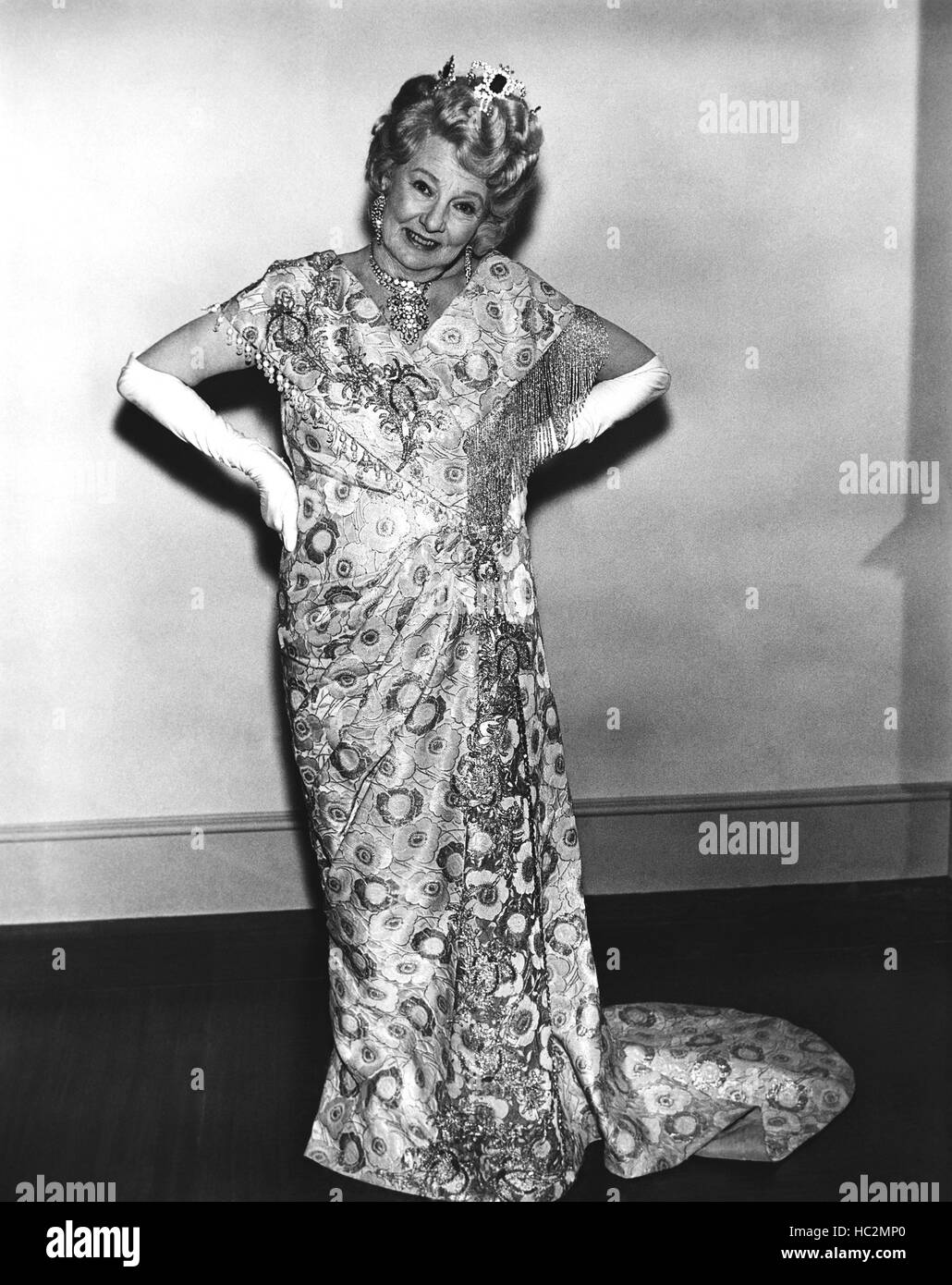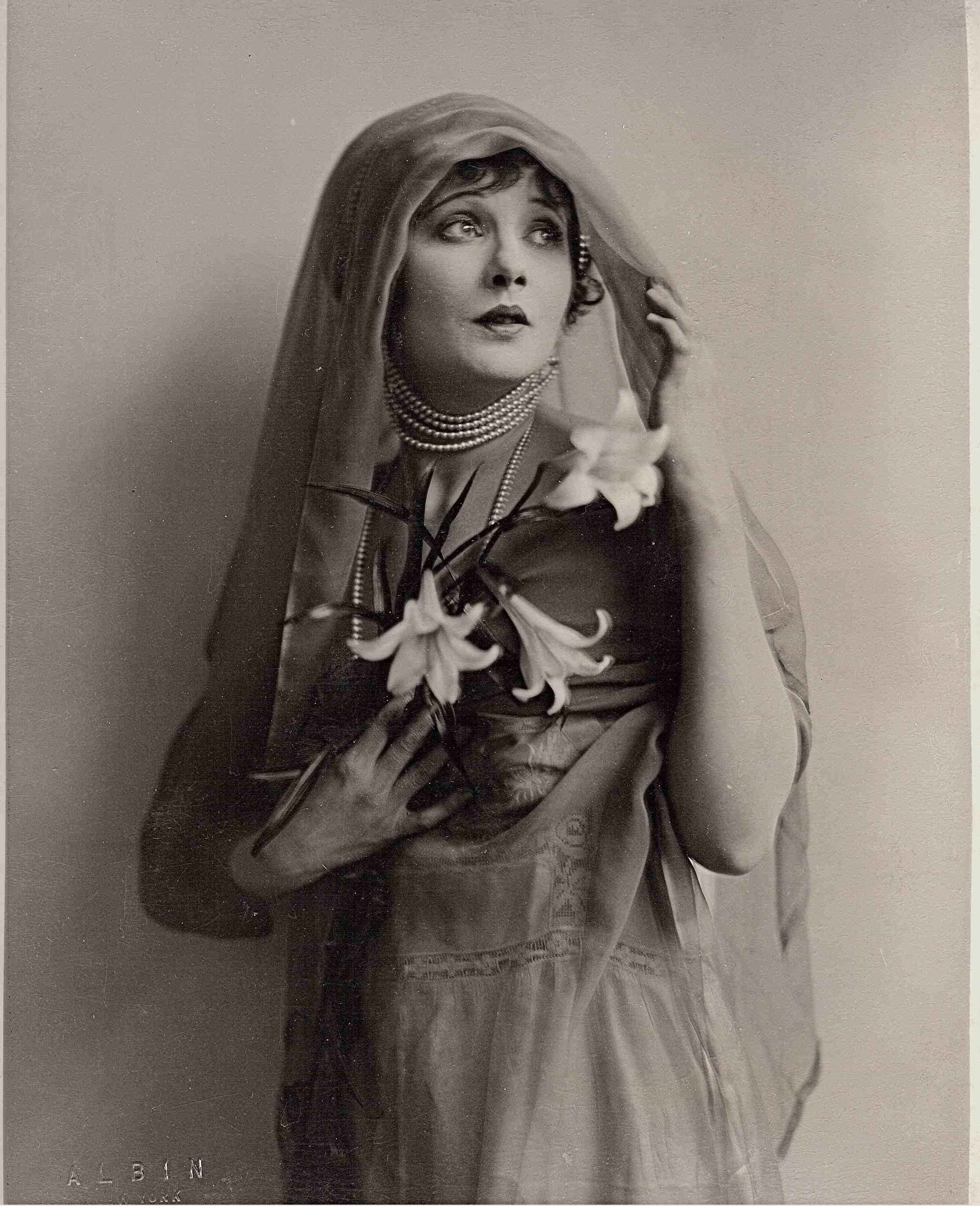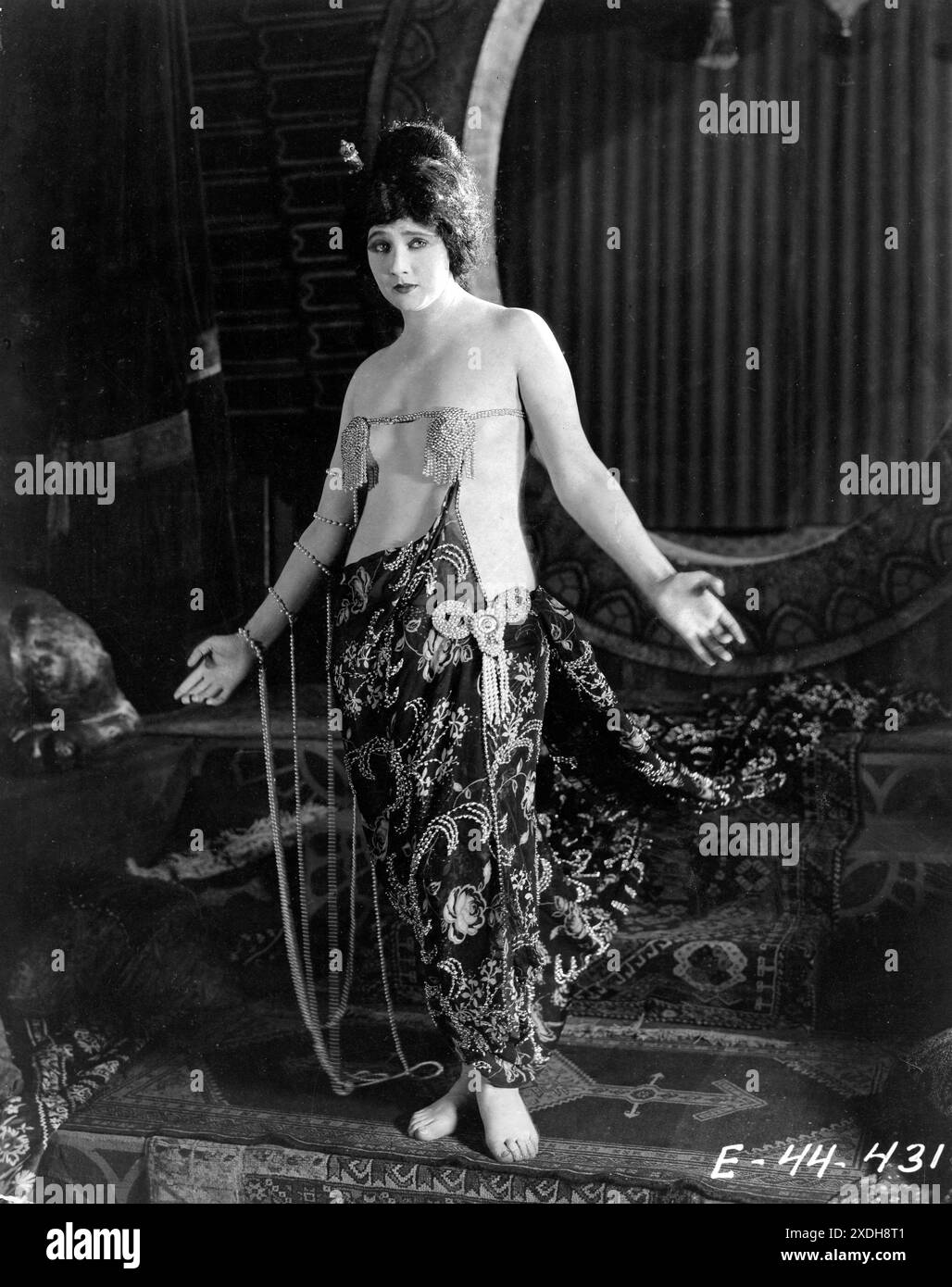Step back in time, if you will, to an early period of motion pictures, a time when the silver screen was still finding its voice, and brave performers were pushing the boundaries of what was considered acceptable. This was the era where a figure like Betty Blythe truly shone, making her mark in ways that were quite remarkable for the day. Her work, particularly her willingness to appear on screen in various stages of undress, certainly placed her among the first to explore such visual expression in cinema, a bold move that helped shape the very early days of film as a visual medium.
She was, in some respects, a trailblazer, appearing in what were then considered rather exotic silent films. These cinematic pieces, often rich with visual storytelling and dramatic flair, provided a stage for her unique contributions. It's interesting, too, how her career, even to its very last screen appearance, played a part in the evolving narrative of film itself, showing how much things could change in a relatively short span of time for those involved in this new art form.
The echoes of these early cinematic efforts and the people who made them continue to resonate, actually, finding their way into discussions about film history, the art of performance, and even the world of collecting. It’s a good reminder that the impact of those first stars, like Betty Blythe, extends far beyond their initial moments in the spotlight, shaping conversations and interests for generations that follow, including, you know, things like movie posters and family connections in the acting world.
Table of Contents
- Biography - Betty Blythe
- What Made Betty Blythe a Screen Pioneer?
- How Did Early Cinema Shape Betty Blythe's Career?
- A Legacy Beyond the Screen - The Betty Blythe Connection to Family in Film
- What Can Film Posters Tell Us About Betty Blythe's Era?
- Uncovering Hidden Gems - The World of Film Memorabilia
- What's Unique About Australian Long Daybills for Betty Blythe's Time?
- The Persistent Appeal of Film History - A Look Back
Biography - Betty Blythe
Betty Blythe, a name that might not immediately ring a bell for everyone today, was a performer who really made a statement during the silent film era. She holds a place in film lore for being among the very first actresses to appear on screen in a state of undress, or perhaps just partially clothed. This was a rather bold choice for the time, considering the social norms and the relatively newness of cinema itself. It certainly pushed the boundaries of what was publicly shown and discussed, marking a significant moment in the unfolding story of visual entertainment.
Her career saw her grace the screen in a number of what were then called "exotic silent films." These pictures often transported audiences to faraway lands, real or imagined, with their elaborate sets, costumes, and stories that felt a little different from the everyday. They relied heavily on visual storytelling, given the lack of spoken dialogue, meaning performers like Betty Blythe had to convey a great deal through their expressions and movements. It was a unique form of acting, one that demanded a particular kind of presence and a way of communicating emotion that transcended words. Her final appearances on screen, too, marked the end of an important chapter in early Hollywood, showing how careers could evolve and conclude within that fast-moving period.
Personal Details
| Detail | Information |
|---|---|
| Full Name | Betty Blythe (Born Elizabeth Blythe) |
| Notable For | Early screen appearances in undress; starring in exotic silent films. |
| Active Period | Primarily Silent Film Era |
| Significant Contribution | Pioneering the depiction of the human form in early cinema. |
| Last Known Screen Work | Referred to as "Betty's last screen" in historical accounts. |
What Made Betty Blythe a Screen Pioneer?
So, what exactly made Betty Blythe stand out in the early days of moving pictures? Well, it goes back to her willingness to appear on screen in a way that was quite unprecedented for the time. When we talk about "nude" or "various stages of undress," it’s important to think about the social context of the early 20th century. Public display of the human form, especially for women, was extremely restricted, you know, and certainly not something one would expect to see in a widely distributed form of entertainment. Her decision, or perhaps the creative choices made for her roles, was a significant step in challenging those norms and expanding what cinema could show.
This wasn't just about shock value, though it certainly might have generated some conversation. It was, in a way, about pushing the boundaries of artistic expression within a new medium. Silent films, without spoken words, relied heavily on visual impact and emotional resonance. A performer like Betty Blythe, by presenting herself in a manner that was both striking and, arguably, quite vulnerable, added a layer of intensity and realism that was quite potent for the audiences of the day. It allowed for stories to be told with a visual frankness that was quite rare, and it certainly contributed to the developing language of film, showing what was possible when creators dared to be a little different.
Her work, therefore, became a talking point, a sort of marker in the history of film censorship and artistic freedom. It showed that cinema, even in its infancy, was capable of exploring themes and visuals that might have been considered taboo in other forms of public art. It is that kind of bold move, you know, that often helps a new art form establish its unique identity and its capacity to reflect or even influence society. Betty Blythe, in this respect, played a very real part in shaping the early identity of the motion picture industry.
How Did Early Cinema Shape Betty Blythe's Career?
The very nature of early cinema, particularly the silent film era, played a huge part in how Betty Blythe’s career took shape. Imagine a time when stories unfolded without spoken dialogue, relying instead on exaggerated expressions, dramatic gestures, and the power of the visual image. This environment was, you know, uniquely suited for performers who possessed a strong screen presence and could convey complex emotions without uttering a single word. Betty Blythe, with her striking appearance and perhaps her willingness to take on roles that were visually bold, found her niche within this particular style of filmmaking.
Her appearances in "exotic silent films" are a good example of this. These films often transported viewers to distant lands, perhaps ancient Egypt or the Middle East, places that felt far removed from the everyday lives of the audience. The sets were often elaborate, the costumes luxurious, and the stories filled with adventure, romance, and sometimes a touch of intrigue. In these settings, Betty Blythe's distinctive look and her ability to embody characters who were perhaps a little mysterious or alluring, truly helped to bring these fantastical worlds to life. It was a kind of escapism for the audience, and performers like her were essential in making that escapism feel real and compelling, even without sound.
The focus on visual spectacle meant that the physical presence of an actor was incredibly important. Every movement, every glance, every subtle shift in posture had to convey meaning. For someone like Betty Blythe, whose roles often involved a degree of visual daring, this emphasis on the body and its expressiveness was a very central part of her appeal and her craft. It allowed her to explore characters and themes that might have been difficult to convey otherwise, making her a memorable figure in a time when cinema was, basically, finding its own voice through images alone.
A Legacy Beyond the Screen - The Betty Blythe Connection to Family in Film
It's interesting how the threads of performance can stretch across generations, weaving a sort of family narrative within the entertainment world. While Betty Blythe made her mark in the silent era, the concept of a performing legacy can be seen much later, for example, with actresses like Blythe Danner and her daughter, Gwyneth Paltrow. They represent, in a way, a continuation of that artistic spirit, showing how talent and a love for acting can pass from one generation to the next, much like a family tradition. It’s a powerful thing to witness, seeing how different eras of film can be connected through these personal ties.
A good illustration of this generational connection is their appearance together in the 2003 film "Sylvia." In this movie, Blythe Danner and Gwyneth Paltrow played mother and daughter on screen, which, you know, added a really special layer of authenticity to their performances. It's one thing to act out a family relationship, but it’s quite another when there’s a real-life bond that informs the portrayal. This kind of shared experience, where a parent and child both pursue the same demanding profession, is a testament to the enduring appeal of storytelling and the stage, or in this case, the screen.
While Betty Blythe's direct family ties to current performers aren't mentioned in the source material, the existence of such a clear mother-daughter acting pair like Blythe Danner and Gwyneth Paltrow highlights a broader point about the film industry. It's a place where personal connections and inherited gifts can, in some respects, play a part in shaping careers. It speaks to the idea that the love for performance, the ability to captivate an audience, can be something that runs deep within families, connecting different periods of cinematic history through shared passion and talent. It’s pretty neat, actually, to see how these personal stories intersect with the bigger picture of film itself.
What Can Film Posters Tell Us About Betty Blythe's Era?
Beyond the films themselves, the posters that advertised them offer a fascinating window into the past, telling us quite a bit about the Betty Blythe era and the wider world of cinema. These pieces of art, often designed to capture the essence of a film in a single image, are more than just promotional material; they are, basically, historical artifacts. They reflect the artistic styles, the social values, and the marketing strategies of their time. Looking at an old film poster is like getting a snapshot of a moment in history, offering clues about what audiences were drawn to and how films were presented to the public.
Take, for instance, the mention of a "Blythe Danner Futureworld (1976) poster." While this comes from a much later period than Betty Blythe’s silent films, it still speaks to the enduring appeal of film posters as collectible items and as records of cinematic history. Posters from any era, whether it’s the dramatic, hand-drawn designs of the silent film period or the more stylized, photographic approaches of later decades, each tell their own story. They show us the stars, the themes, and the visual language that defined movies at different points in time. It’s a very real way to connect with the past, to see how films were perceived and how they fit into the cultural landscape.
These posters also give us a sense of the sheer volume of films being produced and the effort put into getting people to see them. Each poster was a miniature work of art, a visual promise of the entertainment to come. For the era of Betty Blythe, these posters would have been particularly important, given that silent films relied so heavily on visual appeal. They had to convey excitement, drama, or exotic allure, all through static images and a few words. It’s a reminder that the way we discover and engage with movies has changed a lot, but the core idea of visual attraction, that, is still very much alive.
Uncovering Hidden Gems - The World of Film Memorabilia
The world of film memorabilia is a truly fascinating one, where pieces of history, like old movie posters, become sought-after treasures. It's a passion that connects people to the films they love, to the stars who graced the screen, and to the very fabric of cinematic history. The idea that a piece of paper, once tacked up outside a movie house, could become a valuable artifact is, you know, pretty remarkable. It speaks to the lasting impact of film and the stories it tells, turning everyday promotional items into tangible links to the past.
Consider the mention of a daybill for "Forty Thousand Horsemen" that sold on eBay a few months ago. This isn't just about a single poster; it represents a whole ecosystem of collectors, researchers, and enthusiasts who are dedicated to preserving and understanding film history through its physical remnants. The fact that someone might be looking for an image of that particular poster, or trying to find out who sold it, shows the community aspect of this hobby. It's a shared pursuit, where knowledge and artifacts are often exchanged, and where the thrill of discovery is a very real part of the experience. It’s like a continuous scavenger hunt for pieces of cinematic heritage.
The existence of a market for such items, like on platforms such as eBay, highlights the enduring value placed on these pieces. These aren't just old advertisements; they are, in some respects, cultural documents. They capture the spirit of an era, the design trends, and the way films were presented to the public. For those who appreciate the history of cinema, finding a rare poster or learning about its journey from a theater wall to a collector's hands is a very rewarding experience. It connects us to the passion and artistry that went into creating and promoting films from decades past, making history feel, you know, a little more tangible.
What's Unique About Australian Long Daybills for Betty Blythe's Time?
When we talk about film posters, it's easy to think of them as a single, standard thing, but actually, they come in many different forms, often specific to certain regions or time periods. Australian long daybills are a perfect example of this, offering a unique glimpse into how films were promoted down under, even during Betty Blythe’s active years. These particular posters, typically measuring 15 inches by 40 inches, had a very specific design feature that tells us a lot about the practicalities of film exhibition at the time. It’s a small detail, but it speaks volumes about the business of movies back then.
The most distinctive feature of these Australian long daybills was the blank section at the top. This wasn't a design oversight; it was, basically, a very practical solution for local cinemas. This space was left empty so that screening dates, times, and perhaps even ticket prices could be added directly to the poster. This allowed distributors to print a general poster that could be used across many different locations, with each individual theater customizing it with their specific showtimes. It was a simple yet effective way to manage the logistics of film distribution before more advanced printing and communication methods were widely available. It was, you know, a very clever system for the time.
This practice shows us how much the movie industry had to adapt to its circumstances. In the era of Betty Blythe, getting films and their promotional materials out to audiences, especially in a country as vast as Australia, presented its own set of challenges. The design of these daybills reflects a logical approach to those challenges, ensuring that films could be advertised efficiently and effectively. It’s a small piece of the puzzle, but it helps us understand the broader picture of how cinema operated, from the big stars on screen to the practical details of getting people into the seats. It’s a good reminder that every part of the film process, even the humble poster, has


